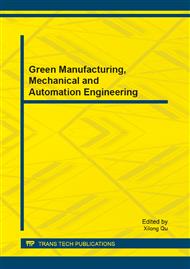p.427
p.431
p.436
p.441
p.445
p.451
p.456
p.461
p.466
Line Selection Algorithm of Coal Mine High Leakage Based on Fuzzy
Abstract:
In order to solve the high-voltage grid electricity coal mine one-phase ground fault (high leak), choose the theory of fuzzy algorithm. According to the current harmonic fault diagnostic, zero sequence active power method and transient zero sequence current mutual product summation method, three methods set fault measure membership function and weight coefficient membership function, realize fuzzy comprehensive decision, judge single-phase grounding line. Through the Matlab/Simulink simulation experiment, fuzzy theory algorithm can accurately choose single-phase grounding line.
Info:
Periodical:
Pages:
445-450
Citation:
Online since:
July 2013
Authors:
Price:
Сopyright:
© 2013 Trans Tech Publications Ltd. All Rights Reserved
Share:
Citation:


